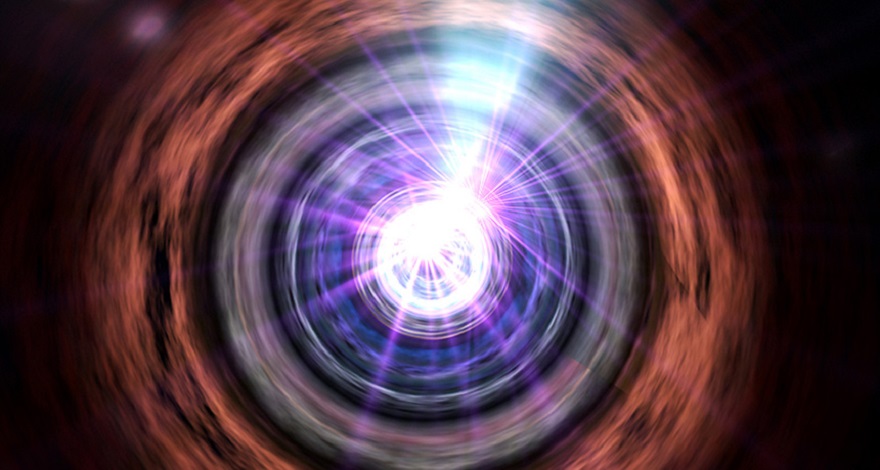Strange changes had been noticed in a distant star system that previously looked like just a giant radio galaxy. The relativistic flow of gas from the black hole at its center turned in our direction, turning it into a blazar.

Radio galaxy turns into blazar
An international team of astronomers has reported that unique events are taking place in the core of a distant galaxy. Previously, it was believed that PBC J2333.9-2343 is just a large radio galaxy, that is, it is surrounded by clouds of ionized gas, creating powerful radio emission. But in the new work, the authors reported that a powerful beam began to beat from its core in our direction.
Where it comes from is not a secret for scientists. Such rays represent the excess matter that is absorbed by the supermassive black hole that is located in the center of each massive galaxy. It often cannot “digest” it completely, so it “shoots” part from the poles at a speed close to light.
When such jets are not directed in our direction, then we call this phenomenon a quasar, and when one of them “looks” at the milky way, it is a blazar. And this is how the galaxy PBC J2333.9-2343 should now be classified.
Jet of gas turns in our direction
At the same time, it should be noted that two jets from this distant galaxy have not appeared now. Its core was active, it absorbed matter from the outside and before. Actually, the reason that PBC J2333.9-2343 was active as a radio galaxy was the jets coming out of the black hole.
They were simply directed not at us, but at giant extragalactic clouds, which under their influence began to glow, forming something like bright petals in the radio range. A new study also saw these petals.
Only now it has become clear that these petals shine with residual light. And the jet of the black hole, which used to give them energy, has now returned to our side, which leads to the transformation of the galaxy into a blazar.
This is also a very unique event, because we are talking about a rapid change in the direction of rotation of an object which has a mass millions of times greater than the sun. And scientists cannot yet indicate the reason for this. Perhaps it led to the merger of galaxies.
According to phys.org
Follow us on Twitter to get the most interesting space news in time
https://twitter.com/ust_magazine

